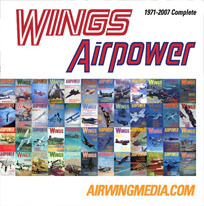The Bell X-2 was a rocket-powered, swept-wing research aircraft designed to investigate the structural effects of aerodynamic heating as well as stability and control effectiveness at high speeds and altitudes. The program was developed jointly in 1945 by Bell Aircraft Corporation, the U.S. Air Force and the National Advisory Committee for Aeronautics (NACA) to explore aerodynamic problems of supersonic flight and to expand the speed and altitude regimes obtained with the earlier X-1 series of research aircraft.
In 1946, the NACA Pilotless Aircraft Research Division (PARD) began testing rocket launched X-2 models at Wallops Island, Va., to gather stability and control data. Additional tests helped NACA and Bell engineers design a pilot escape system for the X-2. The NACA made its spin tunnel and supersonic wind-tunnels at the Langley Memorial Aeronautical Laboratory, Hampton, Va., available to evaluate various aspects of the X-2 design. The NACA was also responsible for scientific instrumentation of the X-2.
Two X-2 airframes, nicknamed “Starbuster,” were built at Bell’s plant in Wheatfield, N.Y., using stainless steel and K-monel (a copper-nickel alloy). The vehicles were designed to employ a two-chamber Curtiss-Wright XLR25 throttleable liquid-fueled rocket engine. It had a variable thrust rating from 2,500 to 15,000 pounds. The X-2 was equipped with an escape capsule for the pilot. In an emergency, the entire nose assembly would jettison and deploy a stabilizing parachute. Once at a safe altitude, the pilot would then manually open the canopy and bail out. Although the Air Force approved the final escape system design, NACA representatives were concerned that it might prove dangerous to use.
A Boeing B-50A bomber was modified to carry the X-2 to launch altitudes around 30,000 feet. The pilot then climbed into the X-2, dropped away from the bomber, and ignited the engines if it was a planned powered flight. After engine burnout, the pilot guided the X-2 to an unpowered landing on the surface of Rogers Dry Lake at Edwards Air Force Base, Calif.
Bell X-2 Kodak Newsweek Advertisement, September 24, 1956
[image src=”/wp-content/uploads/2013/11/Bell-X2-NewsweekAd.jpg” responsive=”true” lightbox=”true”]
Because of a decision to install the first available engine in airframe 46-674, airframe 46-675 was delivered to Edwards first for glide tests. It arrived at Edwards on April 22, 1952. After two captive flights, Bell test pilot Jean L. “Skip” Ziegler made the first glide flight on June 27. A rough landing caused some damage to the aircraft and the second glide flight was delayed until Oct. 8. Two days later, Air Force test pilot Maj. Frank K. “Pete” Everest successfully completed the third glide flight of the X-2.
Bell X-2 Specifications
- Crew: one, pilot
- Length: 37 ft 10 in (11.5 m)
- Wingspan: 32 ft 3 in (9.8 m)
- Height: 11 ft 10 in (3.6 m)
- Wing area: 260 ft² (24.2 m²)
- Airfoil: 2S-50 bicon
- Empty weight: 12,375 lb (5,600 kg)
- Loaded weight: 24,910 lb (11,300 kg)
- Max. takeoff weight: 24,910 lb (11,300 kg)
- Powerplant: 1 × Curtiss-Wright XLR25 rocket engine, 15,000 lbf (67 kN)at sea level
- Performance
- Maximum speed: Mach 3.196 (2,094 mph, 3,370 km/h)
- Service ceiling: 126,200 ft (38,466 m)
Following the unpowered tests, the X-2 was returned to Bell’s plant in New York. The engine had not yet been installed in the first X-2, 46-674, so it was installed in the second shortly after it returned to Wheatfield. Captive flights with the new engine were carried out over Lake Ontario. During a flight to check the liquid oxygen system, an explosion resulted in the loss of the X-2 and severe damage to the B-50. Skip Ziegler and B-50 crew member Frank Wolko were both killed. The X-2 fell into Lake Ontario and was not recovered. The B-50A was damaged beyond economic repair and was subsequently replaced with a modified B-50D.
Lt. Col. Frank Everest Tests The Heat Barrier In The Bell X-2
At Wheatfield, N.Y. The following day, it began its journey to Edwards beneath the B-50D. The aircraft arrived on July 15 and technicians at the NACA High Speed Flight Station (HSFS) began to install instrumentation to gather handling qualities data. On the advice on the NACA, the Air Force purchased a Goodyear Electronic Digital Analyzer (GEDA) analog computer. Richard E. Day, NACA project engineer for the X-2, programmed the GEDA and turned it into a rudimentary flight simulator for the aircraft.
On Aug. 5, 1954, the X-2 was carried aloft for another captive flight beneath the B-50. Later that day, the X-2 was carried aloft for a second time and released. Pete Everest, now a lieutenant colonel, made a successful glide flight that ended in a rough landing on the lakebed. The vehicle sustained minor damage and was returned to Wheatfield for repair.
Bell X-2 on Muroc Dry Lake Bed with Collapsed Nose Gear
[image src=”/wp-content/uploads/2013/11/Bell-X2-Crash.jpg” responsive=”true” lightbox=”true”]
The X-2 returned to Edwards on Jan. 16, 1955, and captive flights resumed on Feb. 5 for propellant system checks. After several captive missions, two more glide flights were accomplished in March and April. Damage to the aircraft during landing required the X-2 to return to New York once again.
The first attempt at a powered flight took place on Oct. 25, 1955, but a nitrogen leak resulted in a decision to change the flight plan. Everest completed the mission as a glide flight. An aborted second attempt ended as a captive flight. Everest finally made the first powered X-2 flight on Nov. 18, igniting only the 5,000-pound-thrust chamber. His maximum speed during the mission was Mach 0.95. Following several aborted attempts, Everest completed a second powered flight on March 24, 1956, this time only igniting the 10,000-pound-thrust rocket chamber.
The X-2 In Popular Culture
- The 1956 film Toward the Unknown starred the X-2, William Holden, Lloyd Nolan and Virginia Leith. A brainwashed former POW tries to return to test flying; co-starring the Martin XB-51 and the Edwards AFB flight line.
- In the pilot episode of Quantum Leap, Sam Beckett (played by Scott Bakula) leaps into the body of fictional test pilot Tom Stratton in 1956, during which time he exceeds Mach 3 in the Bell X-2.
- At the beginning of the 2000 film Space Cowboys, Frank Corvin (Clint Eastwood) and pilot William “Hawk” Hawkins (Tommy Lee Jones) crash a fictional two-seat version of the X-2.
Both chambers were used for the first supersonic X-2 flight on April 25. The airplane reached a speed of Mach 1.40 and a maximum altitude of 50,000 feet. Everest completed three flights in May that pushed the airplane’s speed envelope to Mach 2.53. On May 25, 1956, a new pilot was checked out in the X-2, Capt. Iven C. Kincheloe. He made a successful supersonic flight, but had to shut the engine down prematurely due to a malfunction. In June, the airplane was grounded for installation of engine nozzle extensions to improve performance. Everest made a supersonic checkout of the modified X-2 on July 12. Everest’s final X-2 flight, on July 23, 1956, earned him the title “Fastest Man Alive.” While gathering data on aerodynamic heating, Everest achieved a speed of Mach 2.87 at 68,000 feet.
Mike Machat’s Bell X-2 Painting, “First Of The Spacemen”
[image src=”/wp-content/uploads/2013/11/Bell-X2-Mike-Machat-Firstspacemen.jpg” responsive=”true” lightbox=”true”]
Purchase this painting from Brooks Aviation Art.
Kincheloe now assumed the role of X-2 project pilot for a series of high-altitude missions. After two aborted flight attempts, he successfully accomplished a climb to 87,750 feet while gathering stability data on Aug. 3, 1956. That same day, NACA director Hugh L. Dryden requested that the Air Force loan the X-2 to the NACA for research purposes. The Air Force continued to fly the airplane while attempting to achieve its maximum altitude capability. While a flight on Aug. 8, failed to exceed 70,000 feet, another attempt on Sept. 7 reached an altitude of 126,200 feet. This earned Kincheloe the title “First of the Spacemen” and a record that stood until the advent of the X-15 program. Kincheloe made three additional flight attempts, but each ended in an abort.
Bell X-2 and Support Crew
[image src=”/wp-content/uploads/2013/11/Bell-X2-Support.jpg” responsive=”true” lightbox=”true”]
The Air Force was due to transfer the X-2 to the NACA in mid-September and preparations were underway. Researchers at the NACA High Speed Flight Station were anxious to use the X-2 for heating investigations in the Mach 2 to Mach 3 range and study handling characteristics at extreme altitudes and speeds. The Air Force, however, asked for an extension of their program so that another pilot could be checked out. As Capt. Milburn G. “Mel” Apt practiced simulated missions on the GEDA, representatives from the Air Force, the NACA, and Bell agreed on a flight plan.
Flight test program
Two aircraft completed a total of 20 flights (27 June 1952 – 27 September 1956).
- 46-674: seven glide flights, 10 powered flights, crashed 27 September 1956
- 46-675: three glide flights, destroyed 12 May 1953
On Sept. 27, 1956, Apt became the first person to fly faster than three times the speed of sound. The engine burned slightly longer than expected and Apt flew a near perfect flight profile, allowing him to reach a speed of 2,094 mph (Mach 3.196). Elation was short lived. For some reason, Apt initiated a sharp turn back toward Edwards. This resulted in a control divergence known as inertial coupling. The X-2 began to tumble uncontrollably. Apt jettisoned the escape capsule, but was unable to extract himself before it struck the ground. Apt’s death cast a shadow over the most spectacular achievement of the program.
Original article: http://www.nasa.gov/centers/dryden/news/FactSheets/FS-079-DFRC.html





